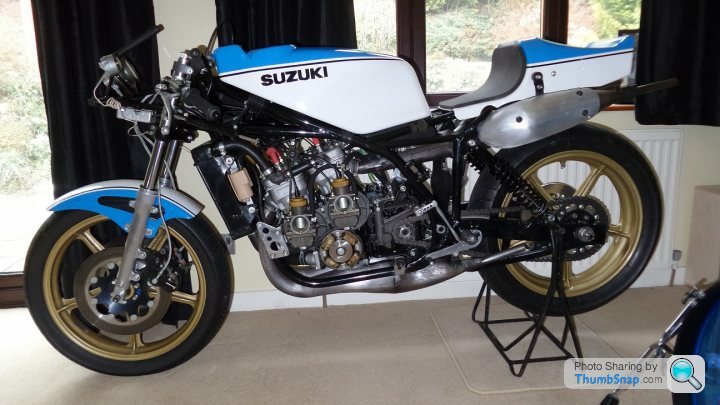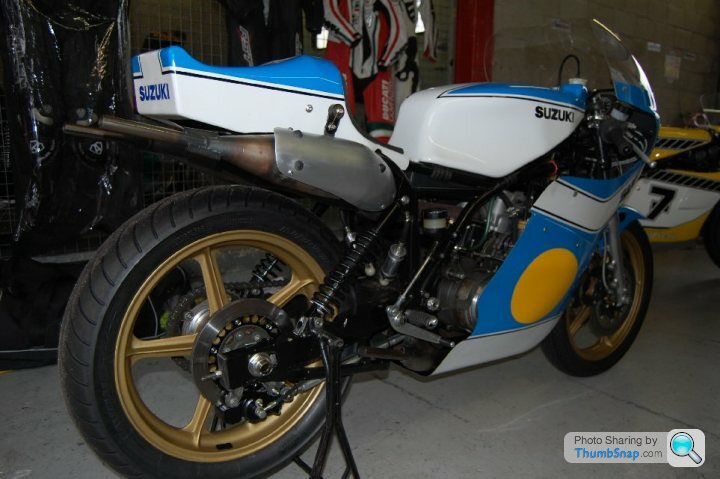Makoto 'Big Mac' Suzuki: PH2 Meets
Back in the 70s Suzuki's RG500 won seven consecutive GP titles; PH chats with one of its original engineers
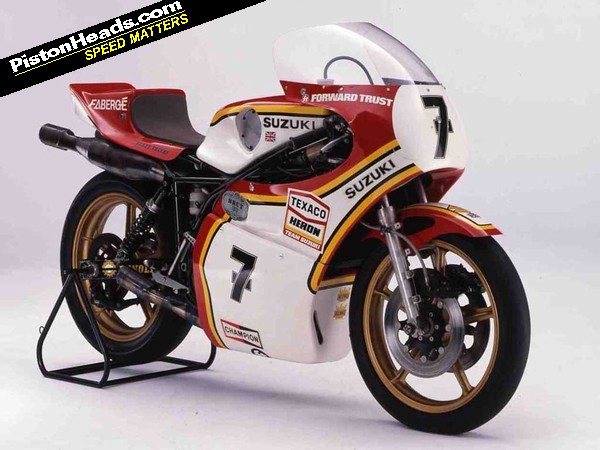
What was its secret? Experts say its square four engine configuration, which centralised mass to create a more balanced handling motorcycle, especially when compared to the inline four rivals of Yamaha and MV. And when Suzuki started to sell production versions of the factory racers, which were near identical in specification to the machines the factory-supplied teams received, race paddocks all over the world went RG500 mad.
In 1978 all but seven of the 40 riders who scored points in the 500 World Championship rode RGs. With a little bit of home tuning, these privateers really could be in with a shot of GP glory, as Jack Middelburg proved at the British GP in 1981. Not only did he take the victory, he overtook King Kenny Roberts' factory Yamaha in the process. On the last lap...
Now, as Suzuki prepares to once again enter the premier race series, PH2 chats to Makoto 'Big Mac' Suzuki, one of the four engineers responsible for the incredible RG500 race bike.
PH2: How did the RG500 project start?
MS: "The TR500 parallel twin was getting too old to compete with the MV, despite an update to water from air-cooling. It made around 70hp but we needed more power, so Makoto Hase, the chief engineer, designed the square four. I was a staff engineer so I drew parts and helped with the design. The RG500 was a true race bike, while the TR500 and XR11 were based around production bikes. As we were both called Makoto, Mr Hase was Makoto and I was Big Mac as calling me Suzuki would have been even more confusing!"
PH2: Why use a two-stroke engine when the competition was all using four-stroke?
MS: "People thought we were crazy as two-stroke engines were only used on small bikes but that was all Suzuki knew, we didn't build four-strokes! The decision was made for us, we had no option so we looked at our small capacity bikes. We had already built square four and V4 125cc and 250cc race bikes, so we upsized them."
PH2: If you had a V4 125, why not copy this format instead of use the square four?
MS: "Makoto Hase was involved in the square four 125 project, so he knew this style of engine and we were very limited in time. We started the project in 1973 with the target of being ready for the 1974 season and only had four people were working on it - two for the engine and two for the chassis."
PH2: What was the power target?
MS: "We aimed for over 100hp, but it made 110hp in the end. We didn't look at the MV's power and aim to beat it. To be honest I went to a GP and the 500 race was over by the time I arrived! We just worked out from the lap times and comparison with out TR500 how much power the MV had and aimed to beat it. The MV triple engine was at the end of its development, it had won 13 500cc titles in succession and MV was looking to stop racing. We entered the championship at the right time."
PH2: Could the RG500's chassis handle the power?
MS: "We were lucky, the XR11 was a 750cc triple with lots of power so we had all the issues with this bike. In America we suffered torn tyres, snapped drive chains, overwhelmed suspension - it was terrible, the chassis development was so far behind the engine.
"For the RG500 we used the knowledge from the XR11 to build a good chassis, however the engine was very hard to ride and peaky. The power was produced from 8,000 - 10,500rpm, that was it, but the GP mechanics at the circuit could alter these characteristics with exhausts and jets at the circuits. At that time there was a lot of experimentation and development happening, we were looking for inspiration from everywhere, even household items. The exhaust end cans on the RG500 were modified green tea cans, they looked the correct size so I introduced this technology into the GP bike... The tea company made the exhaust cans for the XR14 and updated XR22 model."
PH2: After two years you updated the XR14's engine with the XR22 'step motor' but didn't race that until 1978; why?
MS: "Barry won the 1976 title on the XR14 but we held the XR22 back in 1977 in case Yamaha came out with something special. They only unveiled exhaust valves and so we kept it hidden until 1978. Also, our customer RG500 XR14 was proving very popular and we didn't want to detract from it, although we also needed to beat it as privateer riders were starting to challenge the factory ones!"
PH2: The customer bike was claimed to be 'as close to the factory machine as possible'. Was this true?
MS: "Yes, the only difference was the fact the factory bikes had titanium or magnesium fasteners where the production bike had steel or aluminium ones. The engine was 100 per cent identical, we just changed the name from prototype to production. You could buy a production RG500 and win a GP, as Jack Middelburg did in 1981. That was the last time a privateer won a 500GP, however he rode an RG500 Mk VIII based on the XR22."
PH2: Did this cause a problem?
MS: "Not for us! For Suzuki the most important thing was the constructor's championship, not the riders' one. If your rider wins you can only say the rider is a world champion, if you win the constructors' championship you can say 'Suzuki is world champion'. This drove Barry mad, he would get very upset because the privateer bikes were identical to the factory ones! For Suzuki it was excellent, we won seven constructors' championships in a row."
PH2: With the XR14 proving so successful, why did you develop the XR22 'step motor'?
MS: "The XR14 engine was very long, we needed to reduce it in length and we did this by removing the idler shaft. The XR22 retained the twin crank design, but didn't have the extra shaft and the two sets of cylinders were at a different height, hence the 'step' name."
PH2: Wasn't the gearbox design new as well?
MS: "Yes, we built the first cassette gearbox on a motorcycle. Up until 1975 you could run eight-speed gearboxes, however this rule changed and you could only run six ratios. To swap gears on the XR14 you had to turn the motor upside down, remove its bottom and take out the gears, which was a long process.
"The Suzuki GB race team originally shared the same workshop in Croydon with the McLaren Racing team, who were using cassette type gearboxes. The idea was suggested to Japan and we designed a cassette system for the RG to allow gear ratios to be swapped very quickly. Gearing is crucial on a 500GP two-stroke as the power band is very small so you need precise gearing to drive out of corners."
PH2: Did the privateers start demanding this new motor?
MS: "Not really, no. People had developed their XR14s so well they were incredibly fast and more than capable of matching the XR22. The power was not so different with the XR22 when compared to the XR14, they both made around 125hp, however the engine was lighter which made the bikes handle better. Weight was a big factor in GPs in the 1970s and 1980s as despite there being a minimum weight of 100kg the bikes would never match this, the best we got was 108kg. With 125hp and 108kg, the XR22 was quite a beast!"
PH2: Did you ride one?
MS: "Yes, but only once for half a lap in Japan - that was enough for me. I pulled out of the pits and rode around a 200-degree corner and the rev counter wasn't even registering as it started at 5,000rpm. On the straight I opened the throttle, the revs suddenly appeared, the bike wheelied and I pulled in. It was a terrible moment... I really appreciated the skill riders such as Barry Sheene had!"
PH2: Was bike racing shown in Japan?
MS: "There was no TV coverage, instead we read reports. After each race the engineers and riders would sit down and hand write pages and pages of notes on the bike's performance and where it could be improved. These would be faxed or telexed to Japan and I would have to imagine the issues and what they wanted. The mechanics were very hands on, which is why it was important to have experienced engineers who could come up with solutions and test them at the track. They would even cut disc valves with scissors to see if they could alter the performance. Most of the time I would look at the notes and think they were mad, but I had to trust what they said would work. My job was to take their ideas and make them reliable."
PH2: The square four format was used until it was replaced by the RGV500 in 1987, what made it so successful?
MS: "Mr Hase was a brilliant engine designer, but also the square four had very good weight distribution and a lot of power. It is a simple engine but one that was reliable and worked very well, however it was limited in its power output, which is why it was replaced by the V4. The inlet port was limited in space, however on a V4 it is not. The more fuel and air you can get into an engine the more power you get out, which is why the introduction of the V4 boosted power from 133hp to over 145hp instantly."
PH2: Now four-stroke engines have replaced the two-stroke in GP racing, do you miss the two-stroke motor?
MS: From the viewpoint of a spectator, yes. Two-stroke races are far better than four-stroke due to the sound, smell and also overtaking. With two-stroke racing you get many chances to overtake as the engine is so precise in its demands. If you make one small mistake you lose time and get overtaken, with four-strokes the person leading the race stays in front for the whole race as the motor is more forgiving. Two-stroke racing was far more exciting and the characters involved were also unique."
Suzuki is displaying a selection of Barry Sheene's race bikes at the Barry Sheene Festival at Oliver's Mount on June 20 and 21. For more information see here.
Gassing Station | Biker Banter | Top of Page | What's New | My Stuff

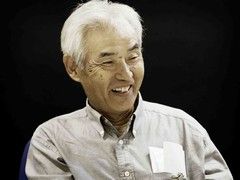

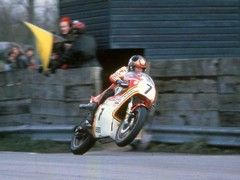
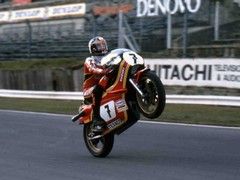
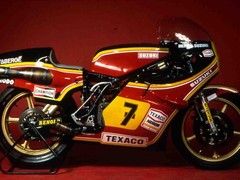





 I had no idea cassette gearboxes existed until today. I guess the only reason that they aren't used more is because of the manufacturing cost?
I had no idea cassette gearboxes existed until today. I guess the only reason that they aren't used more is because of the manufacturing cost?